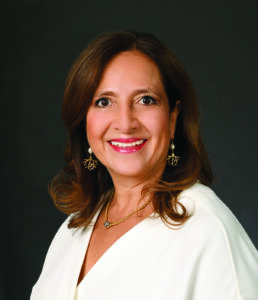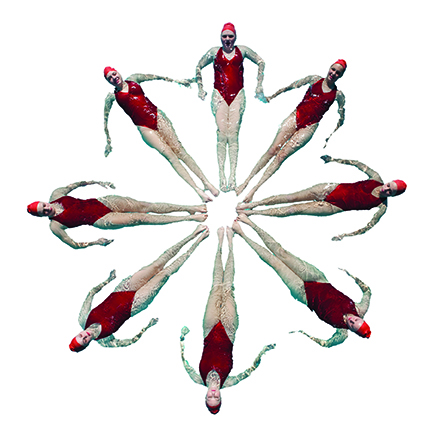 By Cynthia Tello, Principal, Smarketing Consulting and Research, San Antonio, Texas, cynthia.tello@smarketingcr.com
By Cynthia Tello, Principal, Smarketing Consulting and Research, San Antonio, Texas, cynthia.tello@smarketingcr.com
The thought-provoking questions in this article are designed to stimulate creative thinking and encourage our own reinvention as qualitative researchers.
— Jennifer Hinton, Schools of Thought feature editor
In a world increasingly described as VUCA (Volatile, Uncertain, Complex, and Ambiguous),1 we face new challenges every day. As artificial intelligence (AI) continues to advance and impact our lives, more clients are bringing research in-house, and qualitative data from quant studies are mined for insights. How does the qualitative researcher stay relevant?
The answer might lie in an excursion to another world: the world of spectator sports. In this field, there is continuous pressure to respond to the demands of a fast-changing world and keep current in the eyes of their audience.
Take artistic swimming, formerly known as synchronized swimming. If you aren’t familiar with artistic swimming, imagine a pool as a stage where swimmers perform a synchronized choreographed routine accompanied by music.2
As a former synchronized swimmer, I can attest that the sport has always been complex, demanding, and highly underestimated, with the average person hardly realizing the diversity of high-level skills it entails. Before 1984, synchronized swimming had been an exhibition sport, officially debuting as an Olympic discipline at the 1984 Olympic Games in Los Angeles. However, by the end of the 1992 Olympic Games in Barcelona, synchronized swimming faced tremendous pressure to prove its popularity and its ability to generate enough revenue to be worthy of remaining an official Olympic discipline.
Like qualitative researchers, who increasingly face the need to defend their worth in a marketplace that demands speed and cost-effectiveness, the International Swimming Federation (FINA)3 had to do a deep dive into synchronized swimming, redefining the sport to yield a healthy ROI at the Olympics. Facing the possibility of disappearing as an Olympic sport, the answer to this challenge was reinvention.
“Citius, Altius, Fortius”
This phrase appeared on the wall of the CDOM,4 the training center in Mexico City where I practiced synchronized swimming as a young athlete. These three Latin words are the motto of the Olympic Games and mean “swifter, higher, stronger.” That is exactly how the leaders of my sport responded to the challenge of reinventing it.
Those words likely inspired the sport’s leadership at the time to become more dynamic and spectacular, luring a broader audience and increasing its popularity. They added new events and routines, leading to the current structure of technical, free, and acrobatics routines with shorter durations and higher audience impact. In 2015, the sport became more inclusive by allowing male participation. In 2017, synchronized swimming was rebranded as “artistic swimming.”
Over the past 10 years, the changes transformed the sport, exponentially increasing difficulty, speed, and spectacularity. Artistic swimmers now move faster and lift others higher than ever before. The new artistry requires more creativity and inventiveness, while the greater degree of difficulty demands that swimmers be more athletic, daring, and well-rounded.
Today, artistic swimming requires “the strength and power of weightlifters, the speed and lung capacity of distance swimmers, the flexibility and skill of gymnasts, and the ability to perform in perfect sync with the music and each other, all while making it look easy.”5 Sound familiar?
As qualitative researchers, we are a land version of an artistic swimmer. We have the stamina to do multiple interviews or groups back-to-back and the flexibility and skills to multitask, promptly adapting the discussion guide or probing on a newly found insight while keeping research objectives and timing in mind. We also create harmony with our participants and our clients to move in perfect sync toward research objectives. It looks easy from the other side of the mirror (or the other side of the screen) until you are the one doing it. That’s when the unique skills required to do insightful qualitative research become evident.
So, the question arises: how can we, as researchers, become Citius, Altius, Fortius—swifter, higher, stronger? In qualitative research, this means reflecting on some fundamental aspects:
- What elements of our work can be made more efficient so that we can bring insights to our clients faster without sacrificing quality?
- In a world where people have shorter attention spans and require increased stimulation to be engaged, what new tools and techniques can we develop to connect with our participants in a more meaningful way?
- How can we leverage technology to meet participants where they are and make research more exciting and enjoyable for our participants and our clients?
- What can we borrow from social media like TikTok, Instagram, and YouTube to make participants’ prework and asynchronous participation more dynamic and fun while still insightful?
- Can we envision collages more like Pinterest boards and use BeReal to get more authentic snippets of respondents’ lives? What can we adapt from WhatsApp to leverage the immediacy and user-friendliness of this medium to get real-time insights?
- In our industry, we also face the growing challenge of keeping our clients engaged. What innovations can we implement to keep our clients fully involved in research when they are no longer present in the back room of a research facility?
- Lastly, are we striving to become more inclusive and incorporate segments of the population currently underrepresented? For instance, while technology now enables us to have nationwide recruitment, it can give us a false sense of inclusion if we do not proactively integrate those who are not tech-savvy enough to participate in online research.
As with artistic swimming, the challenge is to be as creative, innovative, and bold as possible while always maintaining the rigor of qualitative research.
Balancing Expertise and Objectivity
Continuing to evolve as a sport, the artistic swimming scoring system changed in 2022, making it more precise, objective, and impartial. Now, dedicated judges assess elements and artistic impressions independently. Newly created technical controllers score difficulty and synchronization.
In qualitative research, we have a similar need to remain objective in our findings and impartial to all participants. This requires us to continuously self-check to ensure we are aware of and remove our own biases while continuing to show unconditional positive regard. Other critical questions we need to ask ourselves to check for unintentional bias include:
- Are we coming into a study with a fresh and open mind where we are not influenced by our expertise in a particular market or industry? We need to be able to put our own paradigm and expertise in the area to the side and be willing and able to listen from an unbiased and objective standpoint.
- How can we remain receptive to the different behaviors and attitudes of younger or older generations living on their own terms, which differ so much from their predecessors or successors?
- If conducting qualitative research in-house, how can we ensure we keep an objective perspective while satisfying internal clients?
Disrupting the Status Quo
Transformations present opportunities to those who understand and adapt best to the new context. In artistic swimming, the top nations that had dominated the sport for 15 years were quickly surpassed by agile countries that pushed the limits of the sport in unimaginable ways. Countries like Ukraine, China, Spain, and Mexico went above and beyond with creativity, daring acrobatics, and technical mastery to amaze judges and spectators alike. These are countries that understood their strengths while candidly recognizing their shortcomings, countries that disrupted the status quo by focusing on the multiple possibilities made available to them instead of becoming paralyzed by the threat of change. Their new strategy was to raise the bar in difficulty and develop differentiating skills that would be hard to replicate, giving them an advantage over other countries aspiring to move up in the ranking.
This scenario of impending disruption seems utterly familiar with AI increasingly permeating our research environments. It is exciting to see that the general attitude in the research community is to understand AI and turn it into an ally, discovering what it can do for us to make our jobs easier and improve our processes while still keeping them human. After all, listening to and connecting with humans cannot be easily replaced. As qualitative researchers, we are capable of empathizing, improvising, recognizing, and eliciting emotions; we find underlying motivations, read between the lines, and create safe environments for participants to open up and share their truths. We qualitative researchers are alchemists, turning findings into insights by applying our experience, knowledge, and understanding of human behavior to what we listen to and observe.
With that in mind and knowing those skills are not easily replaceable, we still need to ask ourselves how to raise the bar and take our skills to the next level. To follow artistic swimming’s example, how can we, as researchers, increase difficulty (mastery), speed (agility in research and reporting), and spectacularity (exceptional insights presented in engaging and impactful ways to really wow the audience with final impressions that are memorable)? Perhaps the answer relies on applying the artistic swimmer’s mindset and ensuring we keep a constant growth mentality. Some thought-starters:
- Identify new tools and technologies that can be leveraged to recruit participants more swiftly and with greater inclusivity. For instance, increase usage of social media for recruitment purposes, including developing relationships with influencers to access niche respondents more effectively, as some field houses are already doing. This approach could also work with community centers, hospitals, and organizations that are relevant to specific niche audiences.
- Seek out platforms that engage with participants in real-life moments, including shopping, unboxing products, etc.
- Leverage closed AI tools to jumpstart the analysis for quicker turnarounds while protecting confidentiality. For example, several platform providers, such as Civicom, now offer AI tools that allow researchers to summarize and ask questions from the qualitative content generated during research; closed AI voice meeting notes tools, such as Otter.ai, can be used for debriefs and to synthesize and summarize themes swiftly.
- Maximize how to integrate insights in an impactful and dynamic manner into reporting, such as embedding video snippets from participants to bring key insights to life.
Once again, all disruptions bring opportunities with them. If we are to prevail in research, we need to understand and leverage our rapidly-changing context—by identifying and capitalizing on our unique skills as qualitative researchers, continuously assessing our strengths, honing our skills, and being the ones disrupting the status quo to continue adding value with mastery, creativity, and wit. In doing so, we can keep ourselves center stage in our clients’ most valuable pool of research resources.
References
- Warren Bennis and Burt Nanus, Leaders. The Strategies for Taking Charge. Collins Business Essentials, 2007.
- https://en.wikipedia.org/wiki/Synchronized_swimming#:~:text=Synchronized%20swimming%20(in%20British%20English,(formerly%20known%20as%20FINA)
- The International Swimming Federation (FINA) was renamed World Aquatics in 2022
- Centro Deportivo Olímpico Mexicano (CDOM), or Mexican Olympic Sports Center. COM.org.mx
- www.nbcsports.com/chicago/tokyo-olympics/what-artistic-swimming-why-sports-name-changed-synchronized-swimming



